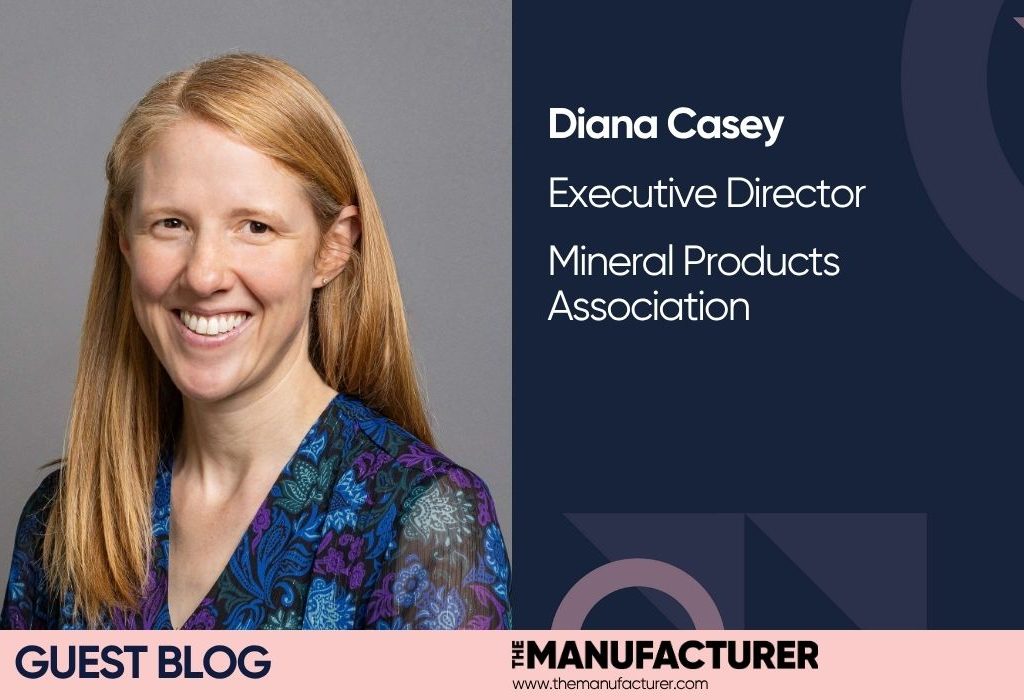Getting to net zero won’t be easy with some commentators already sounding the alarm on threats to the survival of heavy industry in the UK. However, with the right policy support, we can have both thriving foundational sectors and a more sustainable future. UK cement is ready to blaze a trail for modern, green manufacturing but we need government to embrace the potential of carbon capture utilisation and storage (CCUS) and tackle wider competitiveness barriers to unlock the sector’s potential.
Manufacturers are working hard to meet the UK’s legally-binding target of net zero by 2050 but there’s no doubt that there will be challenges and, sadly, the potential for some industrial casualties along the way. However, there are options to prevent this and the UK cement sector is showing what the path to success could look like – if it gets the backing it needs.
UK cement has made significant progress on decarbonisation and it’s poised to go further. Our domestic industry is ahead of the curve in CCUS adoption, and there’s a real opportunity to leverage the expertise and experience set to be developed in cement for the benefit of other industries.
The government’s support for CCUS so far has been welcome, committing £21.7bn over 25 years for HyNet in the North West and North Wales, and the East Coast Cluster pipeline in the North East. Earlier this month, it was announced that a further £28.6m from the National Wealth Fund would be funnelled into the Peak Cluster pipeline – a crucial investment given 40 per cent of UK cement production takes place in the Peak District.
These are all steps in the right direction but to keep propelling us along the net zero journey, we need Labour to both support dispersed sites in more isolated locations and consider the longer term funding structure for CCUS in the UK. As a relatively small island, the UK is primed to lead the way in global CCUS development. We can capitalise on the short distances between capture and storage, and our capacity to hold over 70 billion tonnes of CO2 in offshore saline aquifers. Cement can be the ideal test case to show what’s possible.
An opportunity to prove the concept
If you were going to deploy CCUS anywhere then it makes sense to do it in cement. The chemistry of cement making means we simply can’t eliminate emissions without it. In the words of the Climate Change Committee’s Seventh Carbon Budget, we cannot see a route to net zero that does not include CCUS. Our decarbonisation plan for the sector, The UK Concrete and Cement Industry Roadmap to Beyond Net Zero, explains that even with breakthroughs in low carbon cement and fuel switching, carbon capture would still need to pick up 61 per cent of emissions to meet targets.
Showing CCUS can add, not take away
So we have a sector where the need is vital. We also have a case study which shows the gains that CCUS could deliver for UK plc. Cement already employs people in well paid, highly productive jobs – each UK cement worker added £191,000 of value in 2022, nearly three times the national average. Investing in CCUS would bring even more skilled, high value jobs into the sector. Adding a CCUS plant requires the introduction of a further 60 new jobs to the roughly 200 already on site.
There is a regional dimension to this too. Portland cement plants have provided skilled employment in rural communities for decades and CCUS can help to future-proof these roles. Involving four of the UK’s biggest cement and lime producers, the Peak Cluster initiative will use CCUS technology to decarbonise production in the Peak District by 2031. Along with its storage partner the Morecambe Net Zero (MNZ) cluster, it will create and safeguard over 13,000 jobs from the Peak District to Cumbria, boosting wages by £154m and generating a £1.8bn gross value added boost annually.
Some have in the past claimed these benefits come at too high a cost, but CCUS investment is far from money down the drain – in fact, for every £1 of cost to the government, Peak Cluster could deliver around £4 in return. 50 per cent of all UK industry emissions are concentrated in seven major industrial clusters or geographic areas, so investing in CCUS in those places is set to lower the overall cost of the projects, sharing the cost of transport and storage infrastructure between industries, and boost the potential return.
Pulling down barriers to growth
We have a unique opportunity to take the green skills learnt through carbon capture in cement and employ them in other industries with historically high emissions. However, all of this will only be possible if we tackle the wider competitiveness issues facing cement and other foundational sectors. The UK’s inflated energy prices are well documented, with producers here facing bills nearly three times higher than international peers. The additional energy price support announced in the Industrial Strategy looks promising, but we need to see these commitments followed through into practice and making an impact, quickly.
Uneven carbon legislation is also putting UK manufacturers at a disadvantage, leaving space for importers to undercut domestic producers. The recent proposal to link the UK’s emissions trading scheme with the EU is a good step in opening access to a larger, more liquid market that can support the deployment of low emissions technology for sectors like cement. However, we need to see this followed up with ensuring the Carbon Border Adjustment Mechanism (CBAM) is watertight so that it truly levels carbon costs with imports from outside the EU and prevents decarbonisation by deindustrialisation.
There is a clear rationale for the government to give cement the support it needs, by continuing to back the Peak Cluster and provide support for the next phase of HyNet, including connection to the cement plant at Padeswood. Not only is cement vital to Labour’s missions, from building wind turbines and transport infrastructure to housing, hospitals and defence, it can also solidify the platform for CCUS innovation – with the potential to unlock carbon gains across manufacturing more widely. With the right policy support, a competitive cement industry can provide the blueprint for modern heavy industry and contribute to a greener, prosperous future for the UK.
For more articles like this, visit our Sustainability channel




